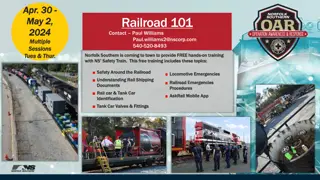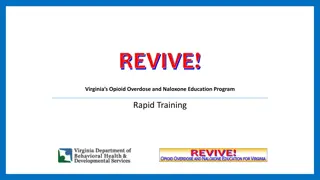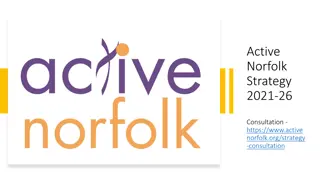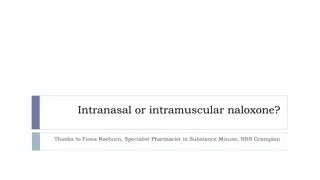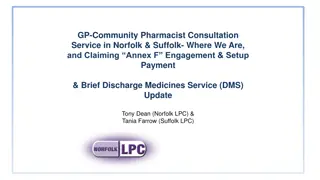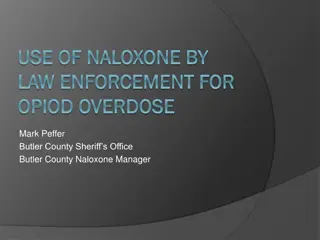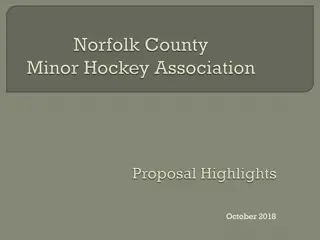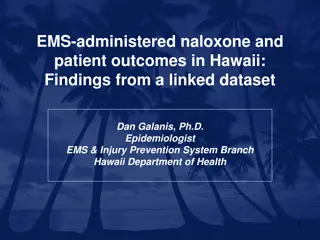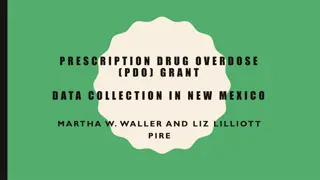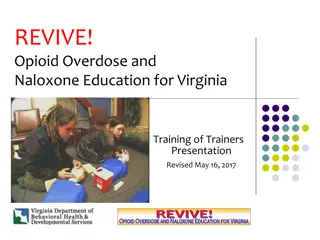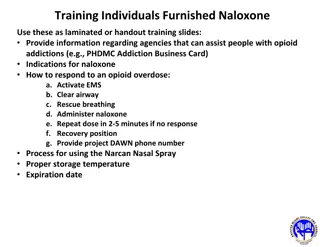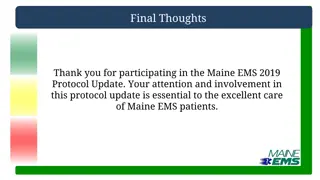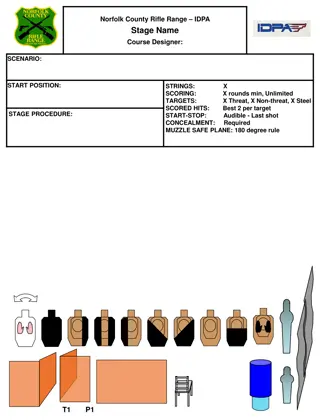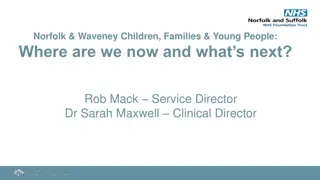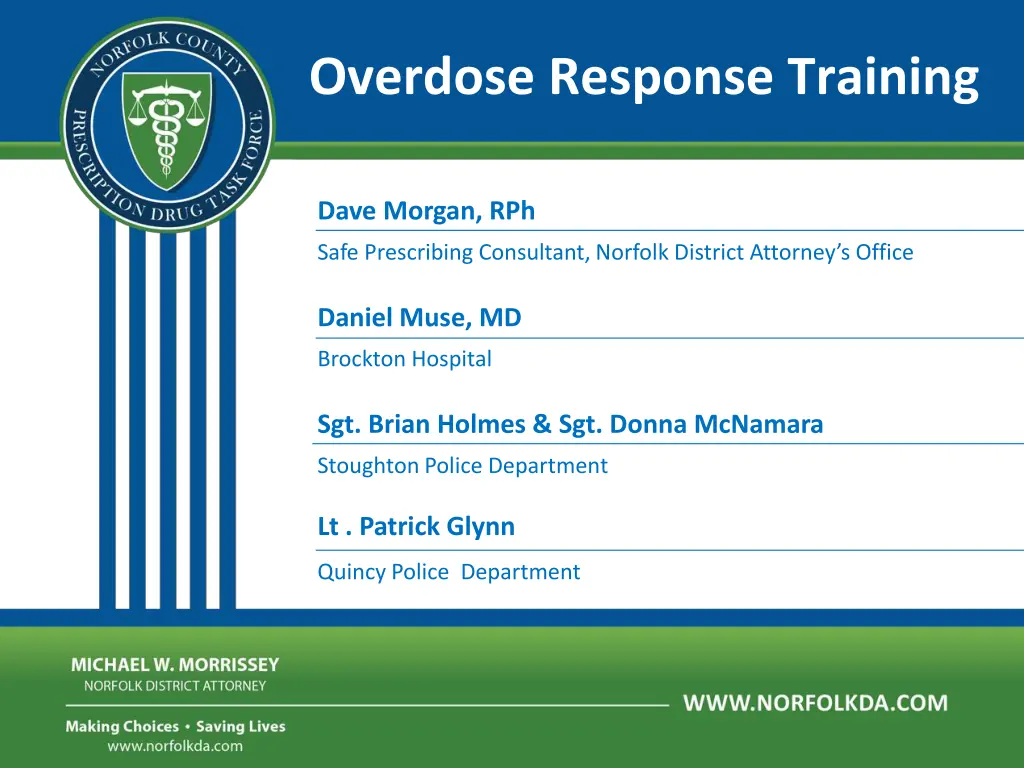
Understanding Opioids and Overdose Response Training
Learn about opioids, recognize and respond to opioid overdoses, the link between heroin and prescription drugs, the scope of the prescription drug epidemic, and how opioids affect breathing. This comprehensive guide covers essential information on opioids and overdose response training.
Download Presentation

Please find below an Image/Link to download the presentation.
The content on the website is provided AS IS for your information and personal use only. It may not be sold, licensed, or shared on other websites without obtaining consent from the author. If you encounter any issues during the download, it is possible that the publisher has removed the file from their server.
You are allowed to download the files provided on this website for personal or commercial use, subject to the condition that they are used lawfully. All files are the property of their respective owners.
The content on the website is provided AS IS for your information and personal use only. It may not be sold, licensed, or shared on other websites without obtaining consent from the author.
E N D
Presentation Transcript
Overdose Response Training Dave Morgan, RPh Safe Prescribing Consultant, Norfolk District Attorney s Office Daniel Muse, MD Brockton Hospital Sgt. Brian Holmes & Sgt. Donna McNamara Stoughton Police Department Lt . Patrick Glynn Quincy Police Department
Learning Objectives 1. Know how opioids work 2. Recognize an opioid overdose 3. Respond to opioid overdose Getting help Rescue breathing Administering naloxone o o o
Police & Fire Programs in MA Gloucester Police Quincy Police Revere Fire Weymouth Fire Saugus Fire Nearly 300 rescues
What are opioids/opiates? Opioids are sedative narcotics They are used in medicine mainly to relieve pain Opioids repress the urge to breathe- when someone is having an opioid overdose, they stop breathing and could die
The term opiate is often used as a synonym for opioid, but it is more. The term opiate is often used properly limited to the natural opium alkaloids and the semi-synthetics derived from them. Opioids Semi-Synthetic Opioids Fully Synthetic Opioids Natural Opioids heroin opium morphine codeine fentanyl methadone hydromorphone hydrocodone oxycodone
The Link Between Heroin and Prescription Drugs File:Oxycodone.svg File:Heroin - Heroine.svg File:Hydrocodone.svg Heroin Hydrocodone Oxycodone
Scope of the Prescription Drug Epidemic 1 equals 16 100 equals 1600 Percocets = $8000
Most commonly used opioids Heroin Codeine Demerol OxyContin Percocet Percodan Codeine Morphine Fentanyl Methadone Opium Opium Hydrocodone Oxycodone Levorphanol Tylenol 3 Morphine Vicodin Demerol Darvocet Dilaudid Tylox
How do opioids affect breathing? OVERDOSE Opioid Receptors, brain Opioid
What puts people at risk for ODs? Mixing drugs- benzos, alcohol & cocaine especially Changes in tolerance Physical health Previous experience of non-fatal overdose Variation in strength and content of street drugs
Mixing opioids with benzos Combining opioids with benzodiazepines or alcohol leads to a worse outcome Benzos are psychoactive drugs that have sedative, hypnotic, anxiolytic, anticonvulsant, muscle relaxant, and amnesic actions The most commonly used benzos are: Klonopin, Valium, Ativan, Librium, and Xanax Xanax (Alprazolam)
What is Naloxone? Naloxone knocks the opiate off the opiate receptor- it does nothing other than blocking opiate receptors Temporarily takes away the high, giving the person the chance to breathe Naloxone works in 1 to 3 minutes and lasts 30 to 90 minutes
What is NARCAN? Naloxone can neither be abused nor cause overdose, only contraindication is known sensitivity, which is very rare. Too much Naloxone can cause withdrawal symptoms such as: nausea/vomiting diarrhea chills muscle discomfort disorientation combativeness
How does Naloxone effect overdose? Restores breathing
NALOXONE reversing an overdose
Really high or overdose? Really high Pupils pinned Overdose Pupils pinned Nodding, but arousable Not arousable Responds to sternal rub No response to sternal rub Breathing slow or stopped Speech is slurred Less than 8 times per minute Sleepy, intoxicated, but breathing May hear choking sounds or a gurgling/snoring noise 8 or more times per minute Blue lips, blue fingertips >> Stimulate and observe >> Rescue breathe + give naloxone
What are the signs and symptoms of an OD? Blue skin tinge Body very limp Face very pale Pulse (heartbeat) is slow or not there at all Throwing up Passing out Choking sounds or a gurgling/snoring noise Breathing is very slow, irregular, or has stopped REALLY HIGH OVERDOSE Muscles become relaxed Deep snoring or gurgling (death rattle) Speech is slowed/slurred Very infrequent or no breathing Sleepy looking Pale, clammy skin Nodding Heavy nod Will respond to stimulation like yelling, sternal rub, pinching, etc. No response to stimulation Slow heart beat/pulse
Environmental clues can help 1. Recognize overdose symptoms 2. Recognize drug paraphernalia 3. Recognize the drug Recognize need for Naloxone Look for symptoms, but if uncertain- land on the side of Naloxone
Dont Forget Scene Safety: Potential Hazards Hazardous materials Other dangers at crash or rescue scenes Crime scenes NEEDLES PEOPLE Oncoming traffic Unstable surfaces Leaking gasoline Downed electrical lines Potential for violence Fire or smoke Assume all body fluids present a possible risk for infection
Respond to an overdose Alert EMS CPR Rescue breathing Administer naloxone 1. 2. 3.
Does the person have a pulse? Checking for a pulse, do it. If no pulse? Then initiate CPR
If an Opioid Overdose is Suspected Step 1: Assess victim s signs & symptoms Call for EMS support Step 2: Stimulate the person - sternal rub If no pulse, start CPR Step 3: Rescue breathing
Suspected Opioid Overdose, continued Step 4: Administer Naloxone Step 5: Monitor and Support -If no pulse, start CPR -If breathing remains absent or slow (< 8 per minute), continue rescue breathing + administer 2nd dose -If breathing restored, then recovery position
Rescue Kit Components Prefilled ampule of naloxone Mucosal Atomization Device (MAD) Luer-lock syringe
Naloxone administration Demonstration of atomizer, syringe and naloxone cartridge assembly
Intranasal Naloxone administration Delivery route has advantages: Its easy and convenient The nose is a very easy access point for medication delivery (even easier than the arm, especially in winter) No shots are needed It is painless It eliminates any risk of a needle sticking to you
Naloxone storage & deployment SPD -Attached to AED case which shall be kept in passenger compartment. No exceptions! Due to storage and exposure to the heat and cold K-9 Units, front desk, booking area.
Local Drug Overdose Problem The problem of fatal and non-fatal drug overdoses in Boston Boston ranks higher than any other metropolitan area in the country for heroin mentions in emergency departments (DAWN, 2009)
The problem of drug overdoses nationwide Drug overdose is the number one cause of death among drug users in the United States (Latkin, 2004) Overdoses kill more heroin injection drug users than AIDS, hepatitis, and other conditions that are related to their drug use (Sporer, 1999) Between 1984 and 2004, deaths from mixing pharmaceuticals with alcohol and/or street drugs increased 3196% (Phillips, 2008)
The problem of drug overdoses In Massachusetts Car accidents is the number one cause of accidental death in the country, except for 16 states where more people die from drug overdose. Massachusetts is one of those 16 states (CDC, 2009) In 2008, 12 Massachusetts residents died every single week from drug overdoses (MDPH, 2008)
Questions & Answers Will Naloxone work on an alcohol OD? What if it is a crack/cocaine or speed/methamphetamine overdose? Are the ambulance and hospitals using the Nasal Naloxone? Others?
Questions & Answers Am I protected against a lawsuit for giving a person who is overdosing Naloxone? What is the risk period for an OD to reoccur after giving Naloxone? If the person isn t overdosing and I give them Naloxone will it hurt them?


